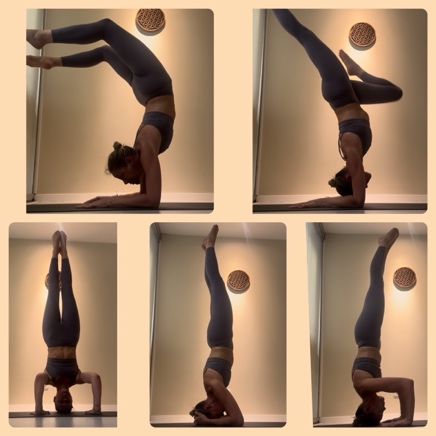The Art of Inverted Balance: Rising by Diving Within

Balancing postures on the forearms (Pincha Mayurasana) or the head (Sirsasana) captivate as much as they intimidate. They impress through their apparent physical strength—but above all, they reveal an inner strength, a profound balance born as much from mental calm as from physical stability.
🔄 Shifting Perspective
When you stand on your head or forearms, the world flips—and so does your way of thinking. Familiar landmarks disappear. The ground becomes sky. Up turns into down. And within that intentional disorder hides an opportunity: the chance to see differently, to let go of certainty, to explore the unknown with trust.
It’s no coincidence these poses are called “the queens of yoga.” They teach us to release control, cultivate patience, focus, and self-belief.
🌳 Strength, Grounding, and Lightness
These balances aren’t just about physical power. They require presence, breath, and deep rooting. Before lifting up, you must ground down. Find proper alignment. Activate the core. And above all, remain calm in the face of instability.
These are postures of truth—they reveal our fears, our resistance, but also our power to transform. With every fall, a chance to learn. With every lift, a quiet victory.
🧘♀️ An Inner Journey
To rise into a headstand or forearm balance is to dive inward. The heart rises above the head. Thought surrenders to feeling. This is a practice that reminds us: balance isn’t found outside—it’s built within, breath by breath, moment by moment.
These postures teach us to dwell in silence, to slow down, to be fully present.
What if inversion became your invitation to rise differently?
To trust yourself. To explore your edge. To feel the power of calm, the freedom of now, the clarity of presence.
These postures are not about performance—they’re about transformation.
The body lifts. The mind settles. And the soul breathes.
